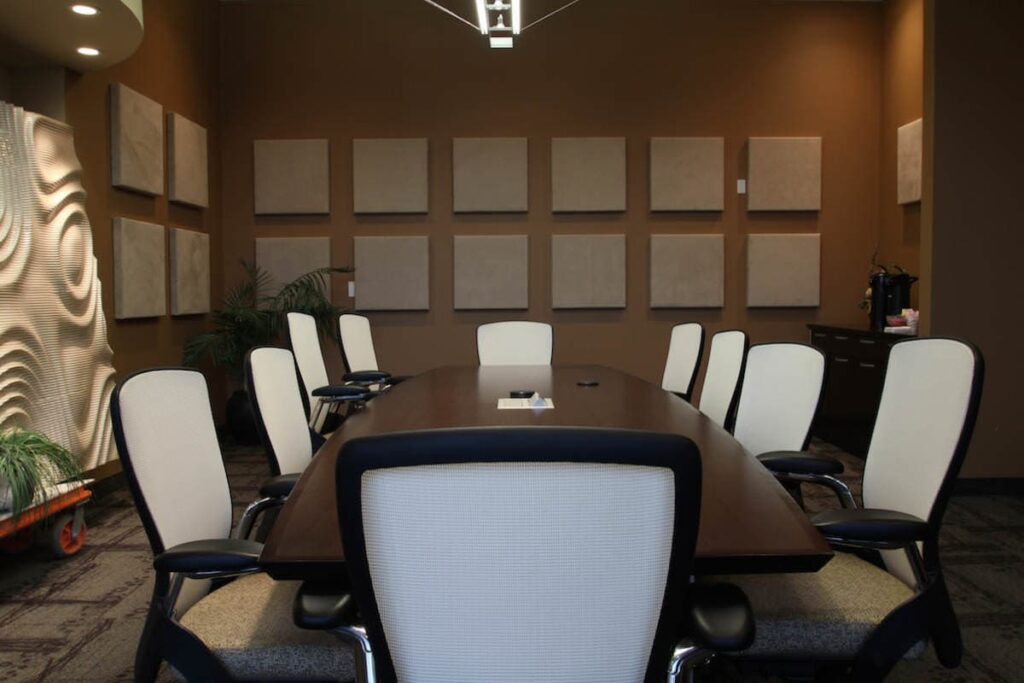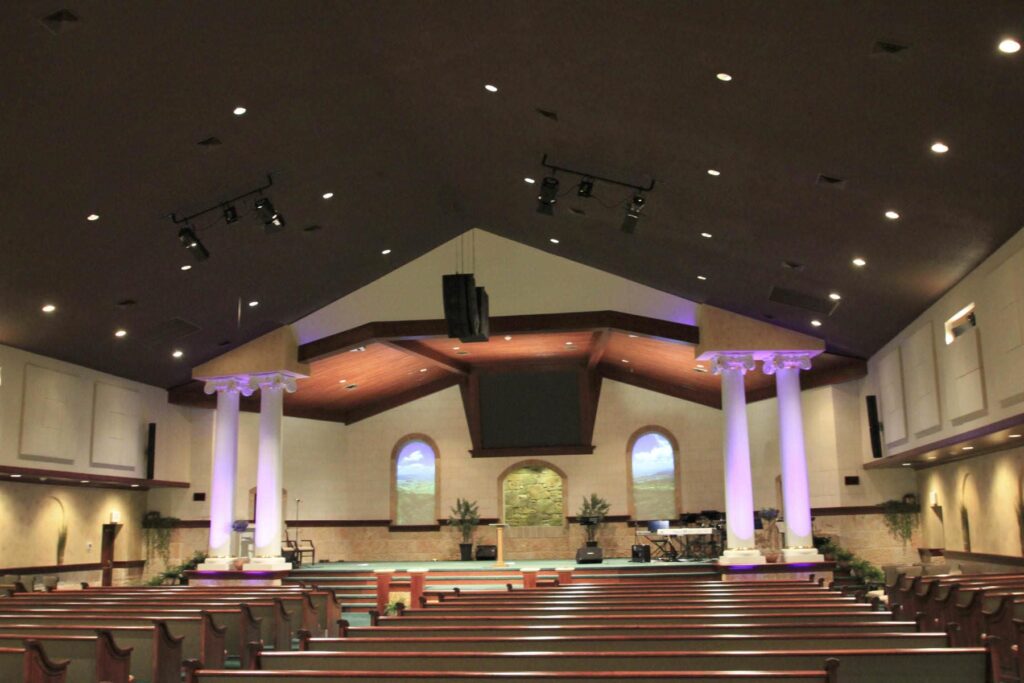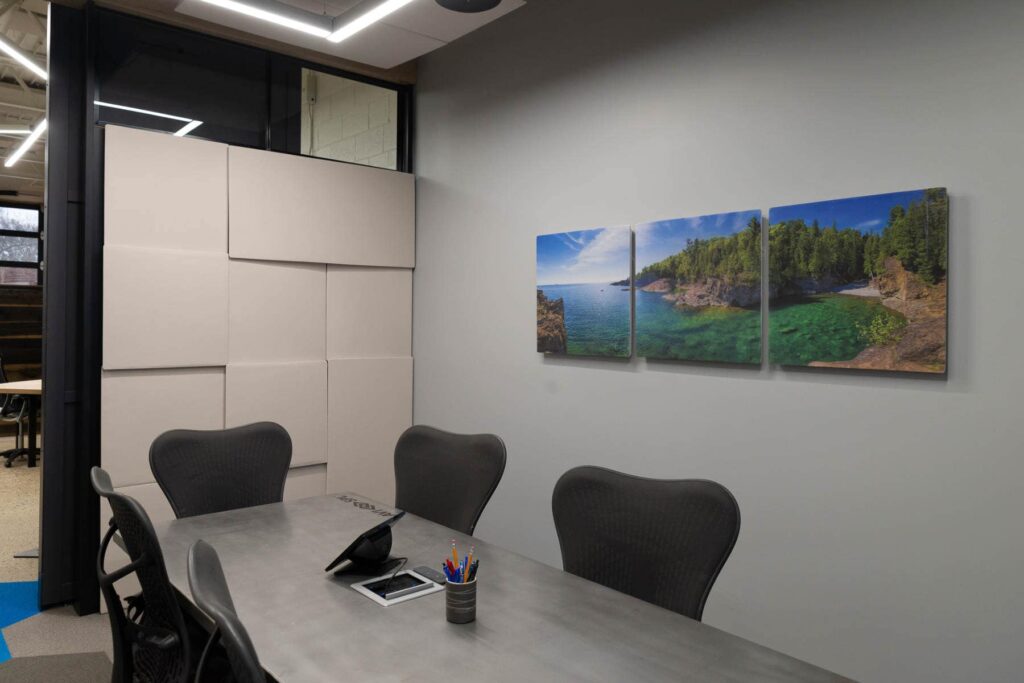How Acoustic Treatment Improves Your Business Space

Having a high-end audio system at your disposal is great, but more is needed to ensure a perfect listening experience.
Even if the quality of sound it produces is excellent, your audience may still hear it differently than intended. Enter acoustic treatment – the crucial ingredient in your audio setup.
If you thought acoustic treatment solutions belonged only in recording studios, think twice! This article will explain why any business where audio is essential should use it.
What Is Acoustic Treatment
Acoustic treatment is a solution that minimizes unwanted effects like echoes that appear in any space where sound is played. But first, it’s important to understand how these unwanted effects appear.
As we all know, sound spreads in the form of waves, and whenever sound waves meet obstacles, they bounce off. Any hard surface, including a wall, ceiling, or furniture, becomes a sound reflector.
As a result of sound bouncing off these objects, a reverberation (echo-like) effect appears that creates unwanted distortions and increases ambient noise. This can make things like conferences, group discussions, phone calls, and even Zoom meetings a less-than-ideal experience.
Acoustic treatment allows you to improve the acoustic quality of any space and enhance the listening experience. So, if you don’t want your public space, such as a worship house, classroom, venue, and even your office to sound like an echo chamber, consider installing an acoustic treatment solution.
Here are some sample installations of various acoustic treatments:
How Acoustic Treatment Works
The goal of acoustic treatment is to minimize the influence of reverberation on the listening experience and improve the acoustic quality of a space.
Acoustic Treatment Methods
Two main acoustic treatment methods help to reach this goal in two unique ways:
- Sound absorption. Incoming sound waves are dissipated using soft materials such as fabric or foam. When a sound wave hits such material, it does not bounce back.
- Sound diffusion. This principle is based on scattering sound waves. When a wave hits a diffuser, its energy is reflected in random directions, which mitigates reverberation.
Each acoustic treatment will produce a different sound effect. When sound absorbers are used, the sound fades quickly, and listeners may perceive it as “flat” or “muffled.” With diffusers, the sound remains vibrant and rich.
However, these two principles are not mutually exclusive. Some manufacturers take the best from both worlds and create acoustic panels that combine absorption and diffusion to produce the best possible results.
For instance, some acoustic panels are covered in a soft fabric that works as an absorber; under it, a diffusor is placed to scatter sound waves that reach it through the absorber layer.

Acoustic panel with absorption layer and diffusor
Types of acoustic treatment
Here are some of the most widely used types of acoustic treatment:
- Bass traps are, quite obviously, used to dissipate low-frequency sound waves, also known as bass. Bass traps are usually placed in corners because that is where sound waves reach maximum energy.
- Acoustic panels are placed against walls and help minimize the reverberation of sound waves that spread horizontally.
- Ceiling baffles are extremely useful in spaces with high ceilings like houses of worship or event venues. They dissipate waves that reflect from above. Next time you go see live music, look up at the ceiling and you will notice various types of acoustic treatments installed.
Acoustic Treatment Applications
Acoustic treatment can improve the audio quality of virtually any space. Strategically placed acoustic panels in your office will help workers concentrate on their job without distracting background noises.
In a house of worship, acoustic treatment will help mitigate reverberation and ensure that the speech is intelligible for every congregant.
In restaurants and bars, acoustic treatment helps to minimize unwanted background noise coming from reverberation – and, therefore, to allow the customers to communicate and listen to the music at the same time.
And, of course, acoustic treatment is a must to produce decent-quality audio if you record podcasts or videos.
How to Choose and Install Acoustic Treatment
Bad news: picking and installing an acoustic treatment solution that will produce desired effect by yourself is impossible – unless you are a sound engineer and love to do extremely complex calculations.
Types, sizes, and placement of acoustic treatment depend on numerous factors. Among those are room size and shape, speaker numbers, sound level, and much more.
Good news: we’ve got the experts you need! So, if you are interested in creating a perfect acoustic space for your home or business, call us, and let’s talk!
All photos courtesy of ProSoCoustic.










